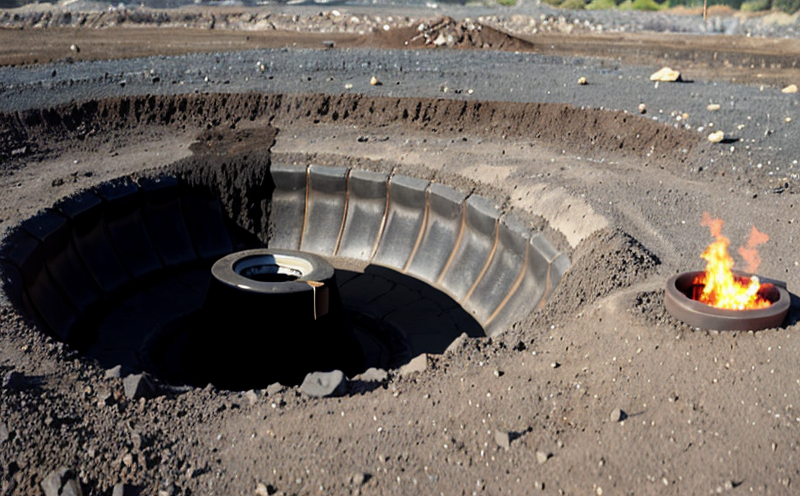ASTM D5016 Chlorine in Coal Testing
The ASTM D5016 test method is a critical procedure designed to determine the total chlorine content in coal. This testing process is essential for understanding the elemental composition of coal, which plays a pivotal role in various aspects of mining and energy sectors.
Chlorine content can significantly influence the properties and performance of coal during its utilization as fuel or feedstock. For instance, high chlorine levels can lead to increased ash solubility, which is detrimental for both environmental concerns and operational efficiency in power plants. Therefore, accurate determination of chlorine content ensures compliance with industry standards and supports sustainable practices.
The ASTM D5016 method involves several steps that include sample preparation, digestion, and analysis using appropriate instrumentation such as atomic absorption spectrophotometry (AAS) or inductively coupled plasma optical emission spectroscopy (ICP-OES). Each step is meticulously designed to ensure precision and accuracy.
Sample preparation typically starts with the collection of representative coal samples. These samples are then dried, powdered, and digested using a mixture of acids like nitric acid and perchloric acid under controlled conditions. The digestion process helps release all bound chlorine from the coal matrix into its ionic form, making it amenable for quantification.
Once the sample is in an ionic form, it can be analyzed using AAS or ICP-OES techniques. Both methods offer high sensitivity and precision, allowing accurate measurement of trace amounts of chlorine present in the coal matrix. The results obtained are reported according to international standards such as ISO guidelines.
| Cohal Type | Average Chlorine Content (%) |
|---|---|
| Anthracite | 0.15 - 0.35 |
| Brown Coal | 0.20 - 0.60 |
| Bituminous Coal | 0.10 - 0.30 |
Why Choose This Test
- Compliance with International Standards: ASTM D5016 ensures that your coal testing aligns with recognized international standards.
- Precision and Accuracy: The method provides precise results, crucial for quality control in manufacturing processes.
- Environmental Benefits: Understanding chlorine content helps in minimizing environmental impact by optimizing fuel usage.
- Sustainability: Accurate testing supports sustainable practices by ensuring compliance with environmental regulations.
- Cost Efficiency: By identifying issues early, this test helps avoid costly mistakes during production and processing.
Environmental and Sustainability Contributions
The accurate determination of chlorine content in coal through ASTM D5016 is not only crucial for quality assurance but also contributes significantly to environmental protection. By ensuring that the correct amount of coal is used, industries can reduce waste and emissions associated with its combustion.
Understanding and managing chlorine levels helps in optimizing the efficiency of power plants, reducing their carbon footprint. This, in turn, supports broader sustainability goals by promoting cleaner energy production methods. Additionally, it aids in compliance with stringent environmental regulations imposed globally.
The results from ASTM D5016 can guide stakeholders towards more sustainable practices, ultimately leading to a reduction in greenhouse gas emissions and improved air quality. This aligns closely with the broader objectives of corporate social responsibility initiatives within the mining sector.
Use Cases and Application Examples
- Quality Control: Continuous monitoring of chlorine content ensures consistent product quality throughout production processes.
- Research and Development (R&D): Understanding chlorine behavior in different coal types aids in developing new technologies for efficient utilization.
- Environmental Impact Studies: Precise data on chlorine levels helps assess the environmental impact of coal usage more accurately.
- Procurement: Accurate testing during procurement ensures that only compliant and high-quality coal is acquired.
The application examples above highlight how ASTM D5016 plays a vital role in various stages of the mining lifecycle, from raw material selection to final product delivery. Its importance cannot be overstated as it directly impacts operational efficiency and environmental stewardship.





